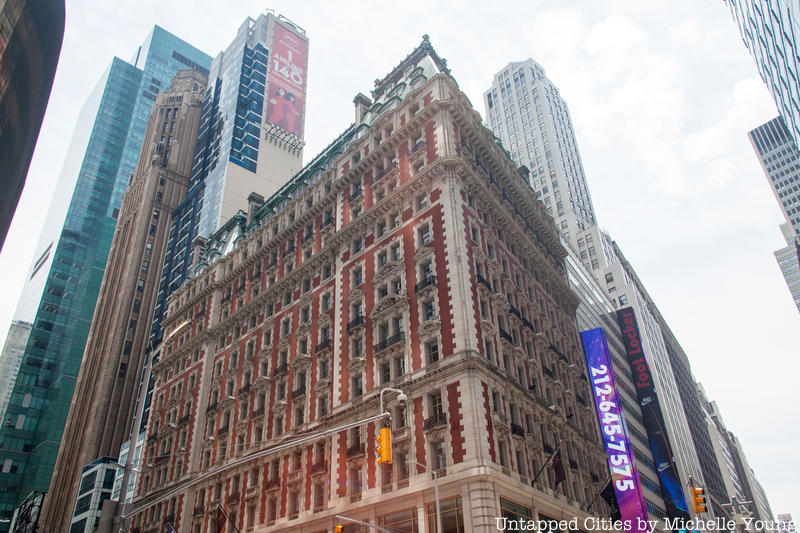8. Knickerbocker Hotel

First opened in 1906, the Knickerbocker Hotel was constructed on land owned by John Jacob Astor IV, at the time one of the wealthiest men in the world. Developers J.E. and A.L. Pennock capitalized on the emerging popularity of the area, which had recently been renamed Times Square in 1904 at the behest of Adolph Ochs, owner of The New York Times when the newspaper made the move uptown. In October of the same year, the IRT opened its first subway line, ushering in an unprecedented wave of businesspeople, entertainers, and theatergoers to an area that, when it was Longacre Square, had been known for adult entertainment and prostitution. But the new wave of higher class entertainment and theater reshaped the neighborhood’s character, and the innovative Knickerbocker was sure to herd people directly to its amenities by way of its platform entrance before they even had a chance to make it to street level.
Replete with Beaux-Arts details on its facade and a 30-foot mural by artist Maxfield Parrish within, the hotel came to the forefront of New York’s high society scene. Its fortunes were short-lived, as ownership was transferred to Vincent Astor following his father’s death on the Titanic in 1912. By 1921, the hotel was closed down and the building saw time hosting Newsweek’s headquarters and garment showrooms. The Subway station beneath has notably expanded to become the busiest in the system, and today the platform that the door sits beside provides access to the 42nd Street Shuttle. FelCor Lodging Trust purchased the Knickerbocker in 2012 with the intent of reconfiguring it back into a hotel, and a grand opening is scheduled for fall of this year.





